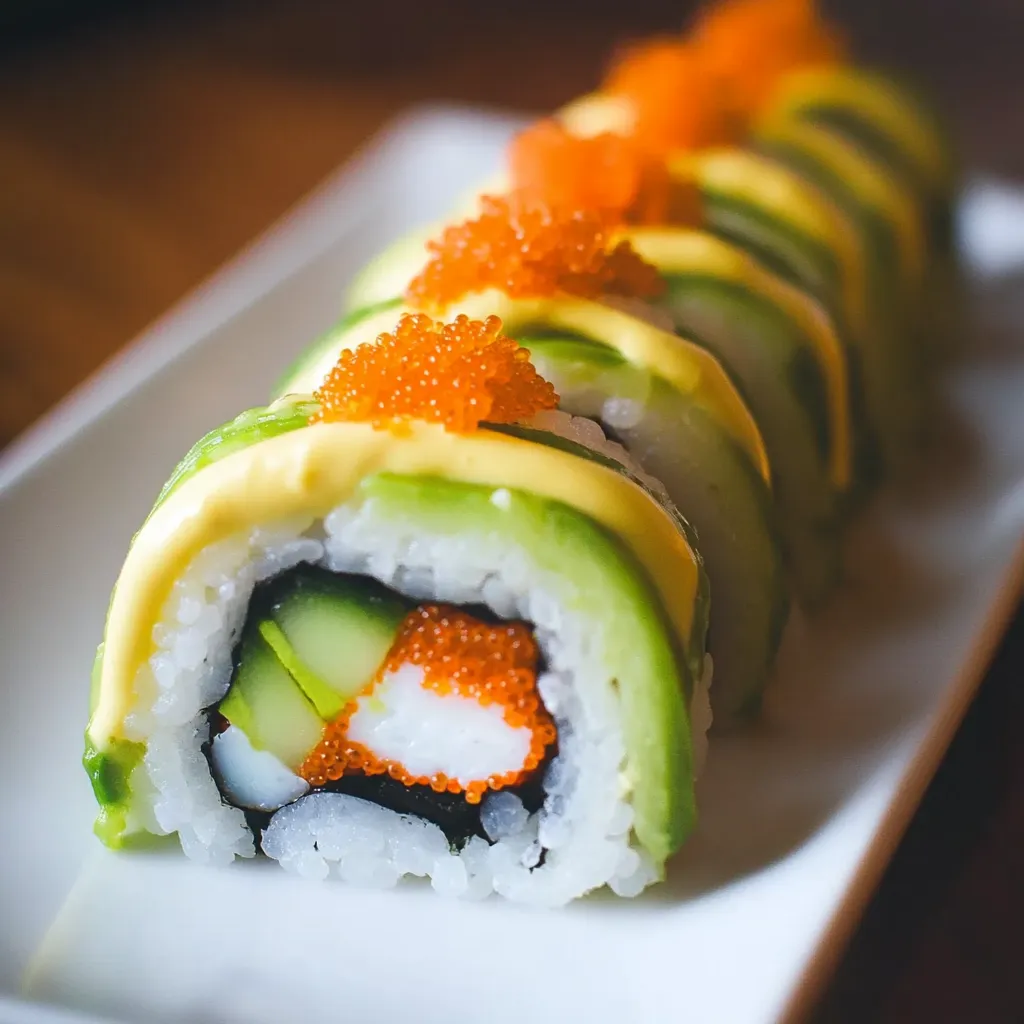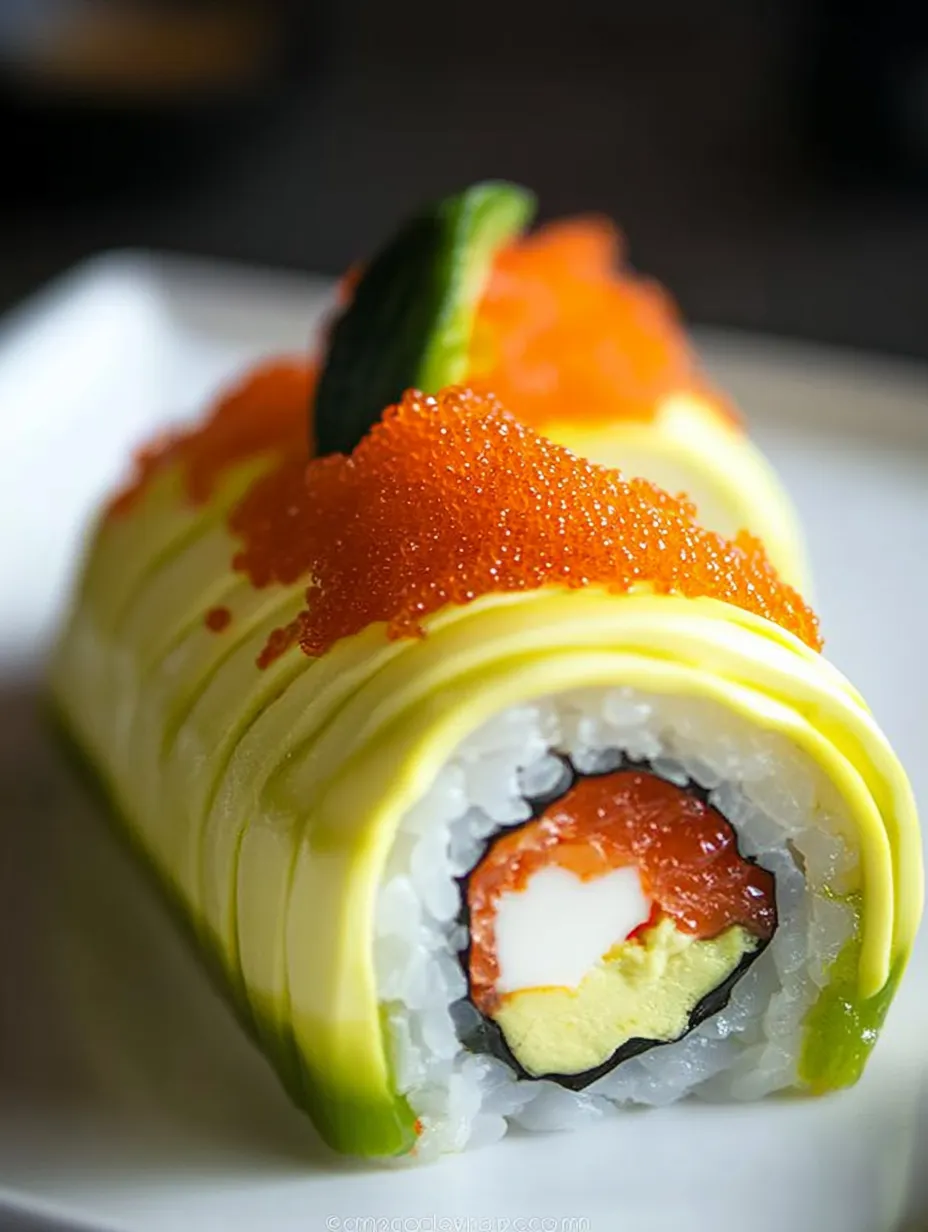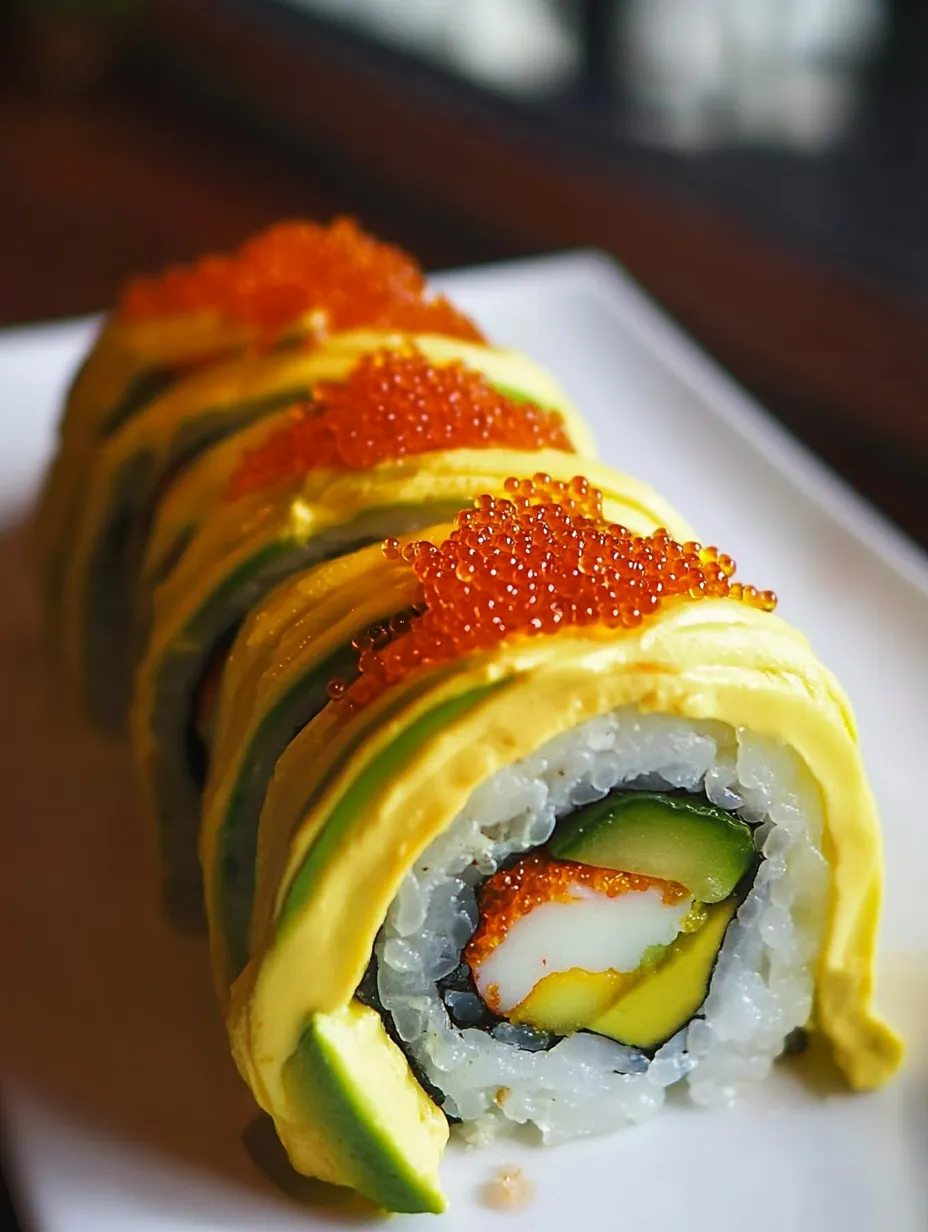 Save
Save
Creating dragon roll sushi at home lets you enjoy this showstopper without the restaurant price tag. I stumbled upon this recipe after watching too many food shows and decided to try it myself. The first time wasn't pretty, but now it's become my go-to when I want to impress guests. These inside-out rolls with their avocado "scales" look complicated but are actually manageable with a bit of practice.
My cousin Jake, who usually sticks to California rolls, grabbed three pieces before dinner was even served last Christmas. Later he admitted he'd been taking pictures to show his friends that "homemade sushi can actually be good."
Fresh Ingredients
- Nori Sheets: Get the good ones if you can. The cheap stuff tears easily and has a fishy taste that overwhelms everything else
- Sushi Rice: Don't substitute regular rice. I tried once and ended up with a mess. Short-grain Japanese rice gets sticky enough to hold everything together
- Shrimp: Boiled just until pink. Overcooked shrimp gets rubbery and ruins the whole experience
- Cucumber: Adds that fresh crunch. I like English cucumbers because they have fewer seeds and more crunch
- Japanese Mayo: It's richer and tangier than regular mayo. Kewpie brand is my go-to but any Japanese mayo works
- Avocado: This is crucial for the dragon scale look. Pick ones that are ripe but still firm enough to slice thinly
- Tobiko: Those tiny orange fish eggs. They're optional but add a nice pop of color and saltiness

I once tried making these with bargain store avocados that were too soft. The "scales" turned to mush and slid right off. Lesson learned - sometimes it's worth spending a little more for the right texture.
Making Your Roll
- Getting Ready
- Cook your rice and let it cool slightly. Mix rice vinegar, sugar, and salt in a small pan until dissolved, then fold into the rice. Slice cucumber into thin strips and cook shrimp until just pink. Have everything ready before you start rolling.
- Basic Structure
- Cut your nori sheet in half. Spread rice evenly over most of the nori, leaving a small border at the top and bottom. Flip it over onto your bamboo mat that's covered with plastic wrap (learned that trick after my rice stuck to everything).
- Adding Fillings
- Squeeze a line of mayo down the center. Arrange your cucumber strips and shrimp in a row. Don't overstuff or you'll have trouble rolling it up tight.
- Rolling It Up
- Use your bamboo mat to start rolling from the bottom, applying even pressure as you go. The first few rolls might fall apart - mine sure did. Keep practicing and you'll get the hang of it.
- Creating Dragon Scales
- Slice half an avocado into super thin pieces. Arrange them overlapping on top of your roll so they look like scales. Cover with plastic wrap and gently press them into place with your bamboo mat.
- Slicing It Up
- Use a sharp knife dipped in water between each cut. My first attempts looked like they were cut with a chainsaw until I learned to clean the knife after every slice.
I started making these after a trip to Seattle where I had the best dragon roll of my life. My first five attempts were disasters - rice everywhere, falling-apart rolls, and avocado that wouldn't stay put. I almost gave up until my neighbor who lived in Japan for years showed me I was rushing the process. Now I pour a glass of wine, take my time, and enjoy the process.
Perfect Pairings
Set these beauties on a dark rectangular plate to make the colors pop. I serve them with wasabi that's been mixed with a little soy sauce, pickled ginger on the side, and cold sake. For bigger appetites, I add miso soup and a simple cucumber salad dressed with rice vinegar and sesame oil.
Switch It Up
If you can get your hands on good eel (unagi), use that instead of shrimp for a more traditional version. Crab works great too - either real or imitation. My vegetarian sister loves them with tempura sweet potato and avocado inside. You can also add a dot of sriracha to the mayo for a spicy kick.
Keeping It Fresh
These don't store well, so make what you'll eat. If you must save them, wrap tightly in plastic and refrigerate, but eat within 24 hours. The rice hardens in the fridge and the avocado starts to brown. I've never had leftovers though - people always finish them.

When my sister-in-law asked me to teach her, I was surprised at how much I'd learned through trial and error. Her first batch looked better than my tenth try. These rolls have become my signature dish for birthdays and game nights. There's something satisfying about watching people's faces light up when they see that green dragon coiled on the plate, especially when they realize you made it yourself.
Common Recipe Questions
- → Why is my rice falling apart when I try to roll the sushi?
- Properly prepared sushi rice should be sticky. Make sure you're using short-grain Japanese rice cooked with the right water ratio, and seasoned with rice vinegar, sugar, and salt while still warm. Let the rice cool to room temperature before using, as hot rice will be too soft and cold rice too firm.
- → Can I substitute the shrimp with something else?
- Yes! Dragon rolls are versatile. You can substitute the shrimp with imitation crab, cooked eel (unagi), tempura vegetables, or for a vegetarian version, use avocado and cucumber with a bit of cream cheese or marinated tofu.
- → How do I prevent the avocado from turning brown?
- Prepare the avocado just before you need it. If you need to prepare it ahead, brush the slices with a little lemon juice to prevent browning. Once the avocado is on the sushi and wrapped in plastic, it's protected from air and should stay green.
- → Where can I find tobiko fish roe?
- Tobiko is available at Japanese grocery stores, some Asian markets, or specialty seafood shops. If you can't find it, you can omit it or substitute with masago (capelin roe), which is similar but smaller, or even black sesame seeds for a different look but still added texture.
- → How do I cut the sushi roll without squishing it?
- Use a very sharp knife that's been slightly dampened with water. Cut with a single, firm drawing motion rather than sawing back and forth. Clean and re-wet the knife between each cut to prevent sticking. If your roll is squishing, your knife may be dull or you might be pressing down too hard.
